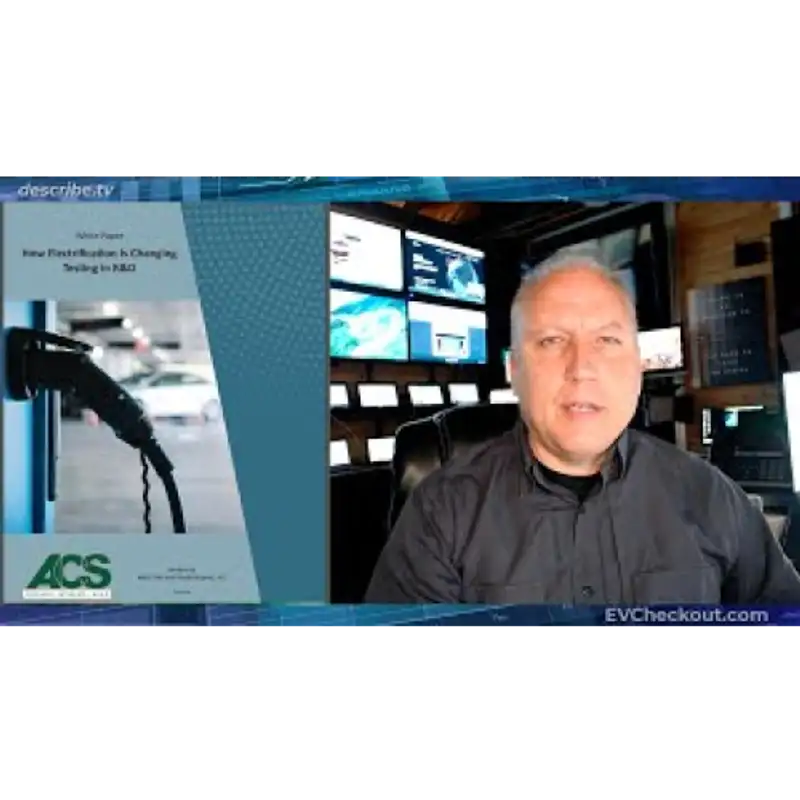Fast-Tracked EV Testing: A Risky Road Ahead?
Download MP3Electric vehicles are at a major turning point in history. We're seeing a lot more adoption of electric vehicles, with more being sold by dealerships, both new and used. But behind the scenes, there's a lot more going on with EVs than just what you see in the car market.
One of the things we take for granted with traditional gasoline and diesel vehicles—internal combustion engine automobiles—is that their engineering and technology have evolved over more than a hundred years. These vehicles are mass-produced.
Starting in the early 1900s, by 1908 and into the 1920s, there were dozens and dozens of manufacturers producing these vehicles. Over the last hundred years, they have undergone major evolutions, with upgraded technologies that have made engines better, introduced things like turbochargers and automatic transmissions. This development has taken a hundred years.
Now, electric vehicles are at the early stages of their technology. Imagine comparing a gasoline vehicle from today to a 1900s Model T Ford—it would be like night and day. Other than four tires and an engine, there would not be much similarity.
The problem is that electric vehicles need to ramp up and follow an adoption curve much quicker. Because of this, engineers are rapidly changing the way they conduct research for EVs. An excellent 10-page document from an engineering firm details what’s going on behind the scenes for electric vehicles. Let’s take a look at a couple of key points, as this information affects you as a consumer and helps you understand what’s happening in the marketplace when purchasing a new or used EV.
First of all, when testing powertrains, many factors must be considered. Safety issues, proper engineering, and administrative protocols must account for heat radiation, noise, and electric shock. Think about that—electric shock. Your vehicle contains hundreds of volts of power. In the past, motor vehicles didn’t have to consider this. Sure, your home has 110V or 220V wires, but they’re hidden behind walls and follow strict safety protocols. However, cars crash all the time. What happens if a crash causes a 200V wire to touch a piece of metal? Does it electrify the whole car? Could you get electrocuted?
Another crucial factor is the market. If engineering takes too long, companies will be late to market, which is an economic fact. Money is also a key consideration. If a company invests in developing new EV technology but fails to sell enough cars, all that engineering effort goes to waste. Additionally, longevity matters. Consumers expect warranties. If new EVs prove unreliable, have high maintenance costs, or require expensive repairs, it will significantly hinder adoption.
The biggest risk is unfamiliarity. While EVs may look similar to gasoline cars from the outside, they are completely different inside. When you see an EV parked next to a gasoline vehicle, the differences aren’t immediately obvious. Some EVs lack front grilles because they don’t need air to cool an engine. Beyond that, they look almost identical. However, their operation is vastly different.
Then, there's environmental testing—not in terms of green energy, but ensuring the vehicle can withstand different climates. Without proper testing, an EV’s performance in extreme weather could be compromised. If a car fails to operate in 100-degree heat or in freezing temperatures, its market potential shrinks significantly. Many vehicles operate outside the ideal 40-70 degree range. Cold weather can affect batteries, while high temperatures can impact motors.
Another critical aspect is noise and vibration testing. In the 1960s and 70s, gasoline vehicles suffered from rattling parts, broken brackets, and loose components due to poor structural design. EVs must undergo rigorous vibration testing because their batteries are electronic devices—potentially sensitive, fragile, and susceptible to damage from road impacts. If an EV battery fails due to excessive vibration from potholes or bumpy roads, the entire vehicle becomes non-functional. A rattling seatbelt is one thing; a damaged battery is another.
Radiation is another issue. Unlike gasoline vehicles, EVs must account for exposure to electromagnetic fields. Cars are subjected to various types of radiation daily—from the sun, motors, and electronic devices. In the past, you may have noticed how a radio placed near a microwave or TV could cause static interference. Now, consider EV batteries. If they are placed too close to strong electrical output sources, could they be disrupted? What happens if you drive near a power plant? These are critical considerations in EV testing.
For gasoline vehicles, these issues have been solved over decades. But for EVs, the industry is attempting to transition in a much shorter timeframe. Most experts anticipate a complete shift from gasoline to electric vehicles by 2032—just about ten years from now. That means the entire EV testing process must be completed in one-tenth the time it took gasoline vehicles to evolve.
Certainly, today’s engineering knowledge and technological advancements allow for faster development. However, unless these challenges are addressed thoughtfully, the EV transition could result in major failures. If electric vehicles aren’t ready for widespread use and fail to meet consumer expectations, their adoption may suffer significantly.

